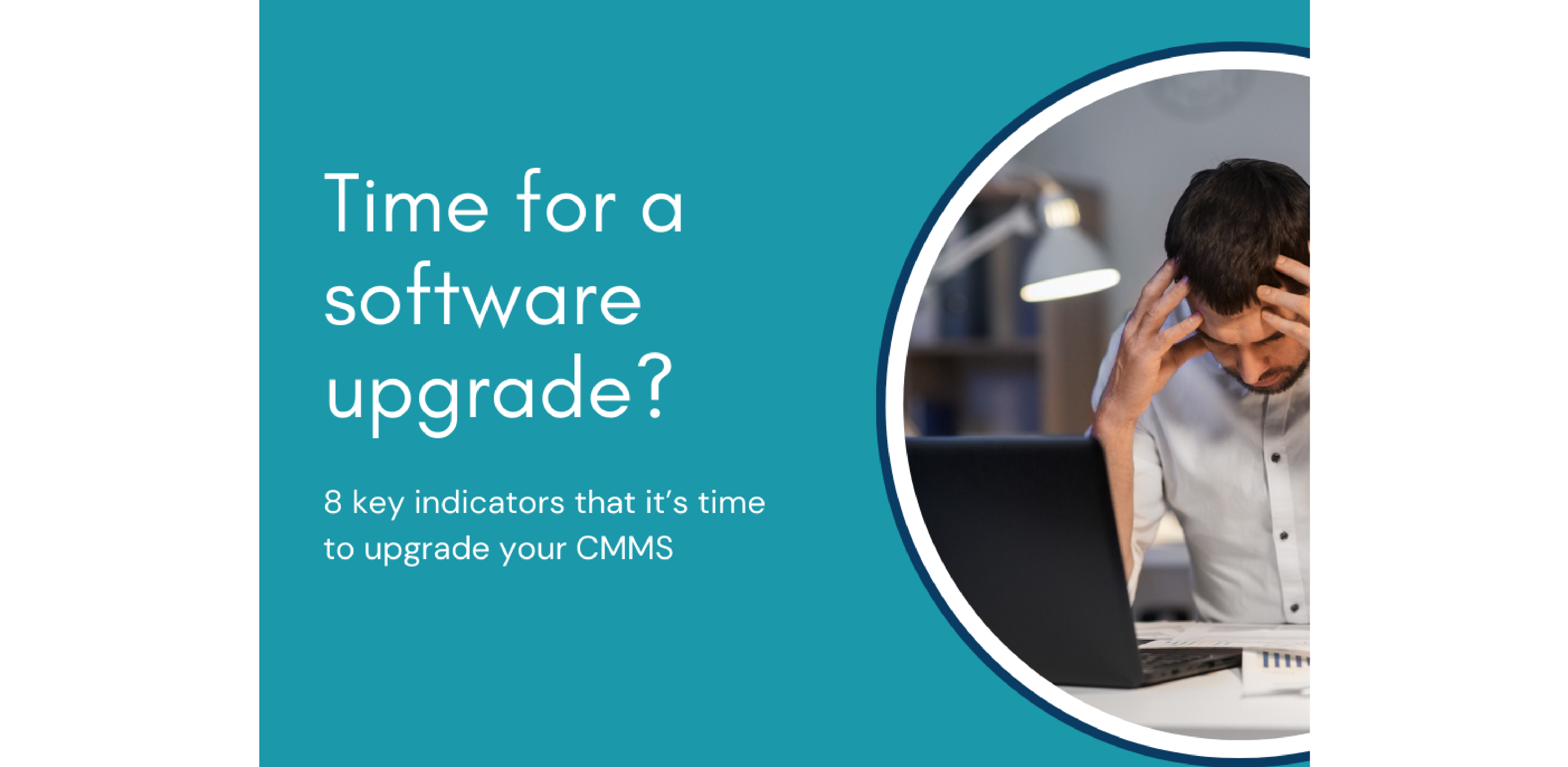8 key indicators that it’s time to upgrade your CMMS Software.
Replacing your Computerized Maintenance Management System (CMMS) does not have to be a daunting task. Determining whether your CMMS needs replacement involves assessing its performance, features, and usability.
Here are some indicators that your CMMS might be either outdated or simply not adequate for your company’s needs:
1. Lack of Advanced Features
No Predictive Maintenance: If your CMMS doesn’t support predictive maintenance capabilities using IoT and machine learning.
No inventory management, or procurement workflows.
Limited Mobile Access: Inability to access the system via mobile devices or lack of a dedicated mobile app.
No Real-Time Data: Absence of real-time data analytics, advanced reporting features or Power Bi Connector.
2. Poor User Experience
Complex Interface: A complicated and non-intuitive user interface that frustrates users and requires extensive training.
Slow Performance: Lagging performance or slow response times when searching, accessing, or inputting data.
3. Integration Issues
Inability to integrate seamlessly with other essential systems like ERP, Health & Safety, Data Collection systems, etc.
Reliance on manual processes for data transfer between systems, leading to inefficiencies and errors.
4. High Costs and Low ROI
Increasing costs for system maintenance, upgrades, and support without corresponding improvements in performance and/or functionality.
Expensive licensing fees that do not align with the value and functionality provided by the system.
5. Poor Support and Reliability
Inadequate Support: Lack of timely and effective customer support, training resources, and documentation. Overseas support that comes with time zone or language barriers. Support which is subcontracted to an agency instead of the vendor’s own resources.
Frequent system downtimes or technical issues that disrupt operations and require frequent troubleshooting.
6. Scalability and Flexibility Issues
Difficulty in scaling the system to accommodate the growing workflow needs or size of your business.
Inflexible or limited ability to customize the system to match your specific maintenance processes and workflows.
7. Compliance and Security Concerns
Outdated or Inadequate security measures that expose your system to potential data breaches and cyber threats.
Failure to comply with current industry standards and regulatory requirements.
8. User Feedback and Adoption
Low User Adoption: Resistance from users to adopt the system due to its complexity or lack of relevant features.
Consistent negative feedback from users about the system’s usability and effectiveness.
Now that you have determined that your old CMMS does not meet your current requirements, how do you assess which new system is right for your company?
It is always safest to look exclusively at vendors who have experience that can be measured in multiple decades. If a vendor has not been living and breathing maintenance for more than 20 years, they cannot possibly have the depth of experience required to safeguard your critical assets.
It is advisable to look only at vendors who work exclusively in maintenance. Vendors who offer maintenance as an add-on to their core business offering and not as their sole focus are not experts in maintenance.
Here are the essential considerations when evaluating a replacement CMMS:
1. Improved Functionality and Features
The new software may offer advanced features that the current system lacks, such as predictive maintenance, IoT integration, real-time analytics, and mobile access.
Enhanced customization options to better meet the specific needs and workflows of the company.
Screen design tools that allow you to tailor all user interfaces to your specific terminology and business requirements.
Master Data Management offers the ability to have one version of the truth. By standardizing, deduplicating, and enriching all data records, you can optimize the management of your parts and critical spares.
2. User Experience and Usability
A more intuitive and user-friendly interface that reduces the learning curve and improves productivity.
Consistency from one module to another will simplify learning the new system and streamline efficiency once deployed.
Better mobile and remote access capabilities, allowing maintenance teams to work efficiently from various locations.
3. Integration Capabilities
Ability to integrate seamlessly with other enterprise systems such as ERP, inventory management, procurement systems, Health and Safety, etc.
Integration leads to improved centralization and sharing across different departments, leading to better coordination and decision-making.
4. Cost Efficiency
Lower overall cost of ownership, including licensing, implementation, and maintenance fees.
More flexible pricing models that scale with the company’s growth and changing needs.
5. Support and Reliability
Enhanced customer support and training resources to ensure smooth implementation and ongoing operation.
Improved system stability and reliability, reducing downtime and associated costs.
Beginning 45 years ago, as a consultancy, Tero has built our brand around Customer Success. This was done by putting the clients needs above all else and listening to what it was they were trying to achieve.
Visit our website and register for a FREE TRIAL. Try out Azzier 8.0; if it works for your company, convert your trial to a production site directly and easily through our website.
Take Azzier® for a test drive at https://azzier.com
Call 1-866-818-8376 ext. 407 for a personalized consultation of your maintenance needs or email us at sales@tero.ca .




